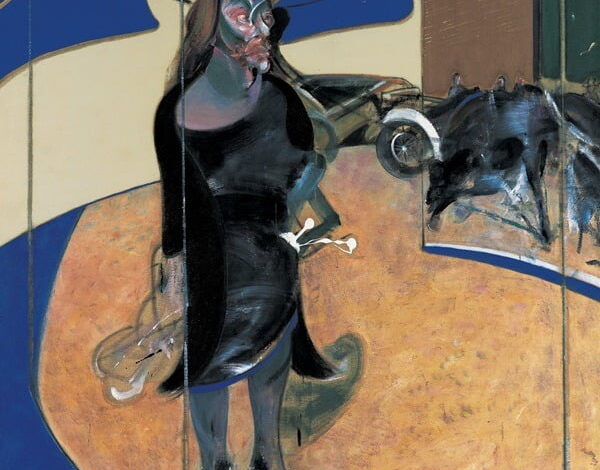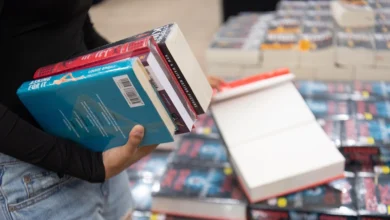
Francis Bacon: Invisible Rooms At TATE Liverpool – Review
There have been some pretty prolific artistes cross the renowned orange threshold of TATE Liverpool and the bustling gallery is the gift that just keeps on giving, it seems. We’ve had Pollock, we’ve had Mondrian and of course, we’ve had wonderful Mr Warhol (just to name a few) but this summer TATE Liverpool is whetting our appetites with a taste of Francis Bacon. Definitely more of a three-course feast than a light lunch bite, the Invisible Rooms exhibition is a must-see event in the city this season and I was lucky enough to be invited to spend a Sunday afternoon strolling around the showcase.
The ticketed exhibition is made up of two solo exhibitions, throwing the spotlight on two of the 20th Century’s most influential artists: Maria Lassnig and Francis Bacon. I imagine the latter will need no introduction whatsoever but let me just begin by explaining that both of these artists had a particular interest in “staging the figure on canvas”. Both demonstrated a distinct preoccupation with war and a penchant for using the human body as a “nucleus” around which they centred their stylised pieces. While Lassnig favoured self-portraiture and Bacon preferred portraits of others, each was on a mission to express internal feelings and social influences by manipulation of space, illusion and the mere mortal.
Maria Lassnig: an (un)pleasant surprise
What I mean by such an ambitious subheading is that while getting to witness Lassnig’s provocative work at close quarters was a most definitely a pleasant surprise, it certainly didn’t instil feelings of pleasure on inspection. Although mostly bright in colour and visually vibrant, the mixture of small and large scale pieces, often centred around the theme of self-portrait, are nothing short of disturbing in subject matter. I’ve always been intrigued by paintings, photographs and films that require you to look beyond a superficial surface or vizard into much darker depths so I thoroughly enjoyed perusing the sizeable showcase and learning more about Lassnig’s inner most thoughts and fears through her shifting style.
I was particularly captured by her later work, which became more realistic in style but skewed ideas space and perception simultaneously but her early abstract interpretations are equally as interesting. I mean, if your curiosity isn’t sparked by a woman who aligns kitchen utensils with weapons of war then I don’t know what will do it.
The turmoil of Bacon’s subjects is almost audible
Now, neither of these artists are a sit-on-the-fence, meek-mannered kind of creative. Both Bacon and Lassnig were put on this planet to make a paint-based statement and this has been wholeheartedly celebrated throughout Invisible Rooms. Bacon’s work is known for it’s dark, macabre nature in terms of both message and aesthetic, which has been cleverly enhanced by the low-lit exhibition space itself. The Lassnig space is TATE-typical – a bright, airy blank canvas upon which her eclectic mix-bag of multimedia pieces are hung but as you pull back the heavy glass door into Bacon’s designated arena, the atmosphere takes on a much heavier dimension. After a quick glance around the space, the pain, turmoil and troubled mindset of his subjects are almost audible. You then inspect the extensive collection more specifically and I swear, they only get louder.
We are first greeted by Bacon’s famous Three Studies for Figures at the Base of a Crucifixion, which is heavily symbolic as this is considered his breakthrough piece. As an open atheist, the crucifix motif provides no religious connotation and instead marked the beginning of Bacon’s signature architectural approach to framing his imagery. All of his subjects are quite literally trapped within geometric outlines and shapes, which is thought to be a direct response to the social struggles of wartime. As we all know, art is entirely subjective but no matter how you read these incredibly deep images, it can’t be denied that Bacon possessed a creative quality quite like no other.
From time to time, I have to admit that I am sometimes left with the feeling that the gallery hasn’t quite done the artist in questions justice to the full potential but you done good this time, TATE Liverpool. The Invisible Rooms exhibition is going to be there in all it’s beautifully gruesome glory until the 18th September so make sure to take a trip down to the Albert Dock to catch a glimpse. I can now confidently confirm that Francis Bacon’s work is best appreciated in the flesh so grab the chance while you can.
The Invisible Rooms Runs Until 18th September. For More Info Visit The Official Tate Website Here.
Stephanie Whalley







